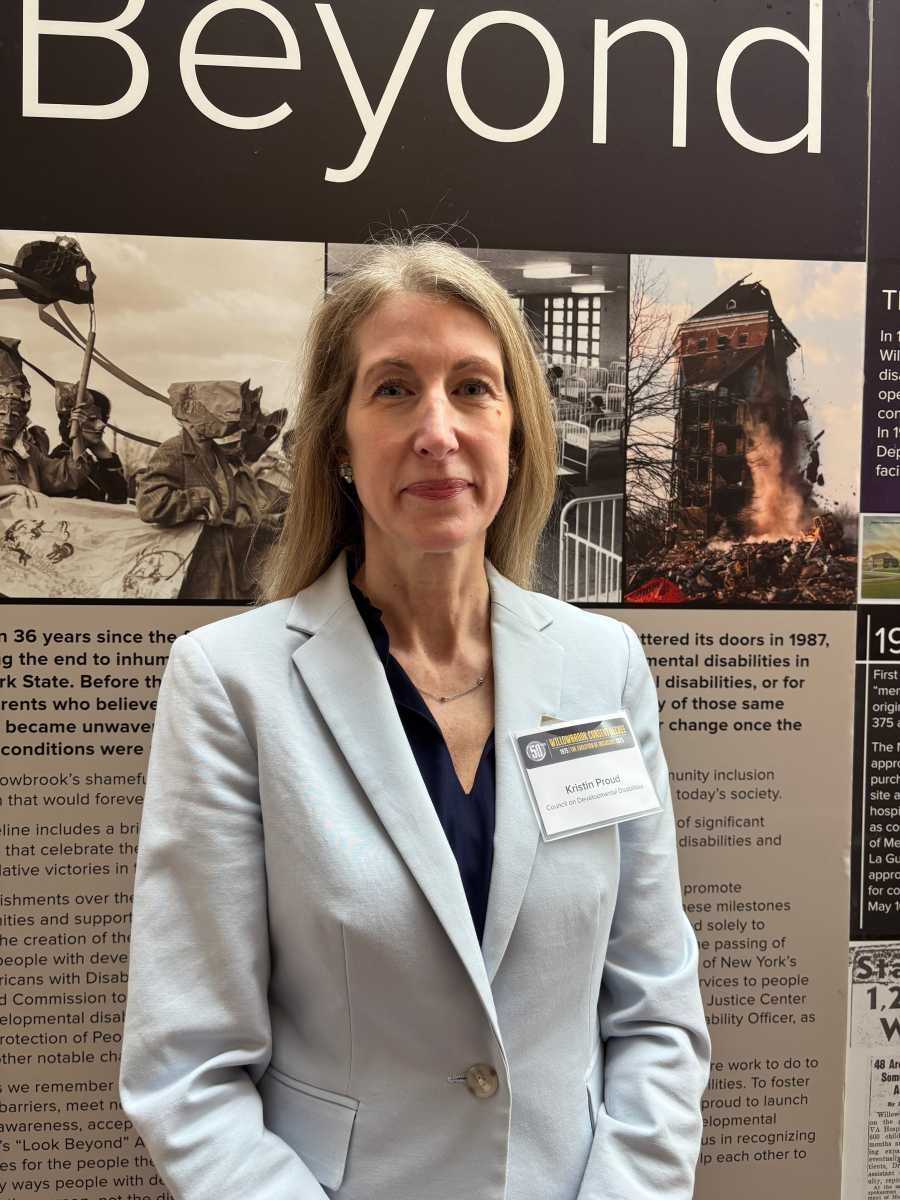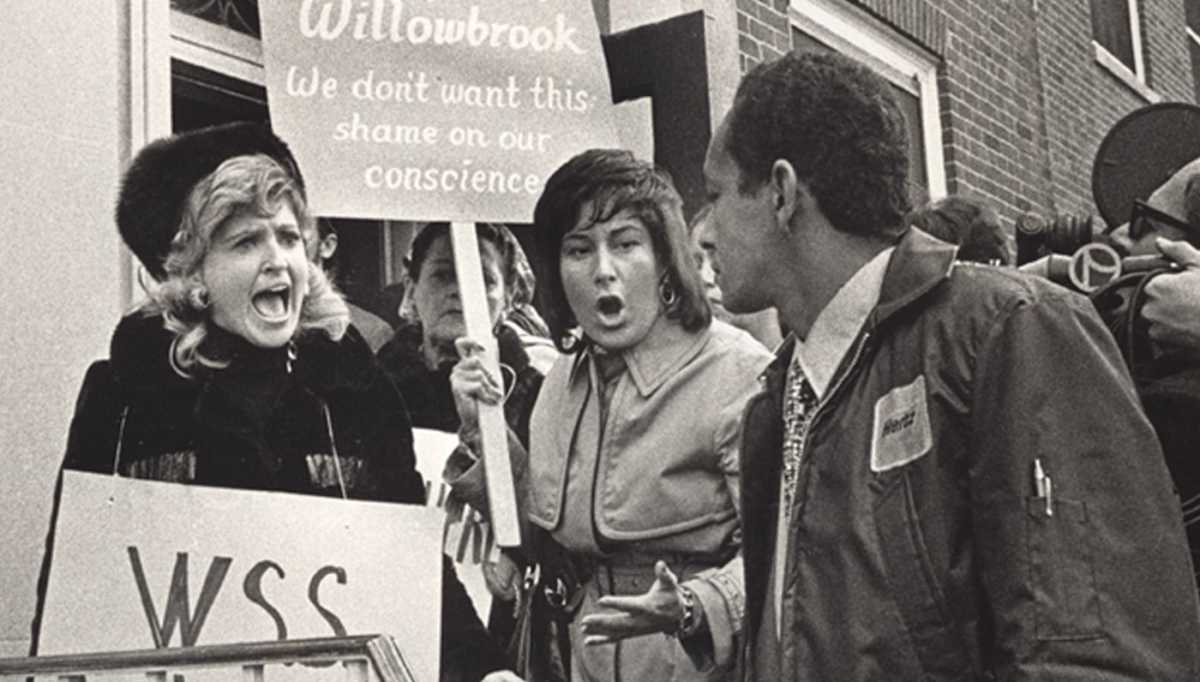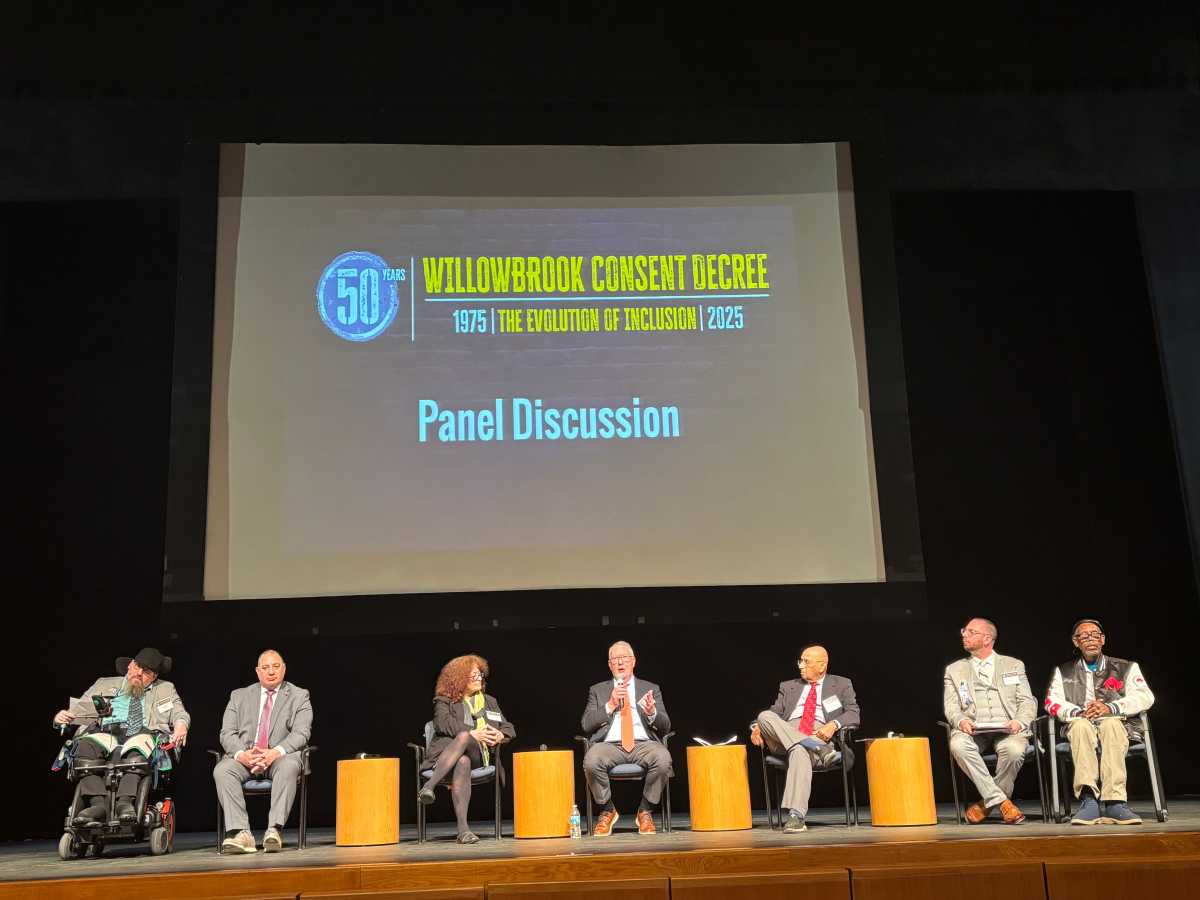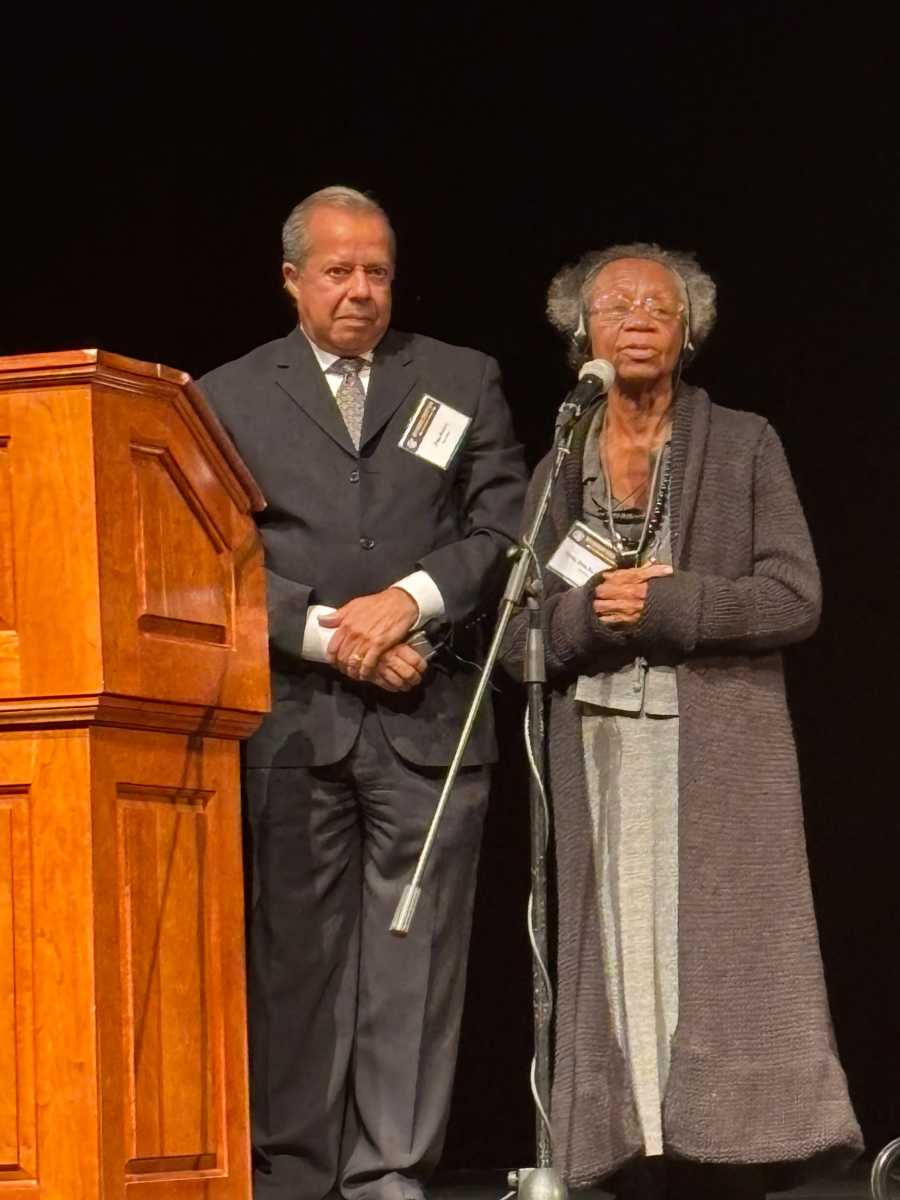Greater than 500 former residents, kinfolk, folks with disabilities, advocates, officers and others marked the fiftieth anniversary of the signing of a doc that led to the closure of the notorious Willowbrook State Faculty and ushered in a brand new period.
They gathered on Friday, Could 2 on the School of Staten Island — constructed on the grounds the place Willowbrook as soon as stood — to explain not solely how Willowbrook grew to become emblematic of an period when folks with developmental disabilities had been warehoused, but additionally the occasions that led to the establishment’s finish.
They talked a few journey from institutionalization to inclusion and the horror of seeing photographs of bare, uncared for sufferers on flooring, curled up beneath sinks and in any other case forgotten till intrepid journalists shined a highlight on a shameful chapter within the state’s historical past.
These gathered on the Could 2 occasion additionally spoke of the necessity for continued vigilance amid doable cuts to companies for the disabled, but additionally as a lot about progress because the ache that preceded it.
Somebody within the viewers shouted, “Never go back,” which appeared like a rallying cry amongst these preventing to maneuver ahead and never neglect.
Willowbrook closure ‘a landmark moment’
Geraldo Rivera, award-winning journalist whose reporting helped result in the closure of Willowbrook State Faculty, speaks on the School of Staten Island on Could 2. He’s pictured with advocate Bernard Carabello.Advance/SILive.com | Jan Somma-Hammel)
Simply as Stonewall grew to become a rallying level for LGBTQ+ rights in America, they mentioned the battle to shut Willowbrook helped champion the rights of developmentally disabled People and transition care from giant, neglectful settings to smaller, intimate group houses the place folks may get the direct, particular person consideration they wanted.
Timothy Lynch, president of the School of Staten Island, known as Willowbrook’s finish “a landmark moment in our nation’s history and a pivotal turning point in the fight for rights and dignity for in the life of people with intellectual and developmental disabilities.”
In 1993, the School of Staten Island acquired 204 acres of what had been Willowbrook and constructed a terrific campus the place college students now research and play sports activities.
Many argue that the post-Willowbrook period wouldn’t have come about with out the reporting of Geraldo Rivera, a WABC-TV reporter who helped expose the circumstances at Willowbrook to hundreds of thousands of individuals on the time.
“This existed in New York City. It wasn’t in Siberia, some far-off place,” Rivera recalled on Could 2. “I think the location had a lot to do with accelerating the public’s outrage. It started or accelerated a crusade.”
Rivera mentioned he and others had been witnesses to Willowbrook’s worst days as some residents returned many years later to recollect and remind.
“It brings back such emotions, such memories,” Rivera mentioned. “I really do feel in every regard that we are the living link to the grim, old days, to the nightmare when everything was horrible and covered up.”
Willowbrook decree ‘triggered’ unbelievable change
 “The conditions were not appropriate,” mentioned Kristin M. Proud, govt director of the New York State Council on Developmental Disabilities. “They weren’t the circumstances you’ll wish to dwell in or on your kids. They didn’t have any programming in the course of the day. They didn’t have companies. They weren’t studying.Photograph by Claude Solnik
“The conditions were not appropriate,” mentioned Kristin M. Proud, govt director of the New York State Council on Developmental Disabilities. “They weren’t the circumstances you’ll wish to dwell in or on your kids. They didn’t have any programming in the course of the day. They didn’t have companies. They weren’t studying.Photograph by Claude Solnik
Attendees talked in regards to the indignities of Willowbrook and the doc that spelled its finish: the 29-page Willowbrook Consent Decree, signed on April 30, 1975, by then-Gov. Hugh Carey. The decree grew to become the idea of a invoice of rights for the developmentally disabled, and a roadmap for reform.
“It is an event that triggered the way we see people with developmental disabilities,” mentioned Willow Baer, performing commissioner of the New York State Workplace for Individuals with Developmental Disabilities. “That we include people with disabilities in our lives and our communities.”
The decree famous that residents are presumed to profit from training and are able to “physical, intellectual, emotional and social” development. It grew to become a key step in ending the segregation of the disabled.
“For its time, the Wilowbrook Consent Decree was a radical departure from the prevailing practices around the country for caring for people with disabilities,” mentioned Clarence Sundrum, an legal professional and member of the Willowbrook Evaluate Panel. “We’re talking about the evolution of inclusion.”
Erik Geiser, CEO of developmental disabilities group ARCNY, known as the doc and shutting an “amazing milestone in the history of the disability rights movement.”
“It’s really a document of hope,” mentioned Henry Kennedy, a father or mother of a girl with developmental disabilities and an legal professional. “It, in many respects, is like some of our founding documents.”
Diane Buglioli, a former Willowbrook worker and founding father of A Very Particular Place, which employs 600 and offers companies to almost 2,000 disabled people, mentioned advocacy mattered then and issues now.
“There wasn’t a personal thing about Willowbrook. It was a stark setting. They were understaffed and underfunded. The concern is that those same trends are happening now,” Buglioli mentioned. “Those of us active in the field are concerned the pendulum will start to swing.”
Willowbrook started with good intentions on a smaller scale, however grew to become unable to take care of its 1000’s of residents because it grew.
“The conditions were not appropriate,” mentioned Kristin M. Proud, govt director of the New York State Council on Developmental Disabilities. “They weren’t the circumstances you’ll wish to dwell in or on your kids. They didn’t have any programming in the course of the day. They didn’t have companies. They weren’t studying.
As circumstances worsened, a sort of moms’ campaign and parental pushback launched with authorized work by Murray Schneps, who represented residents, and work by dad and mom and advocates equivalent to his spouse, Vicki Schneps, and others. Vicki Schneps owns Schneps Media, the father or mother firm of New York News; the Schneps’ daughter, Lara, had been at Willowbrook.
 Earlier than founding Schneps Media, Victoria Schneps picketed over deplorable circumstances at Willowbrook State Faculty, the place her daughter Lara had been beneath care. Her work with journalist Geraldo Rivera led to dramatic reforms of group residence care in New York, and bolstered her perception in native journalism’s capability to alter public coverage for the higher.Schneps Media
Earlier than founding Schneps Media, Victoria Schneps picketed over deplorable circumstances at Willowbrook State Faculty, the place her daughter Lara had been beneath care. Her work with journalist Geraldo Rivera led to dramatic reforms of group residence care in New York, and bolstered her perception in native journalism’s capability to alter public coverage for the higher.Schneps Media
Considerations for the long run
 A panel dialogue on the fiftieth anniversary of the Willowbrook Consent Decree throughout a Could 2, 2025 occasion on the School of Staten Island.Photograph by Claude Solnik
A panel dialogue on the fiftieth anniversary of the Willowbrook Consent Decree throughout a Could 2, 2025 occasion on the School of Staten Island.Photograph by Claude Solnik
Many issues have modified, together with guidelines that outlawed medical experiments equivalent to these executed with Willowbrook residents who got Hepatitis B.
“There is a bar against experimentation,” mentioned Beth Haroules, lead counsel within the Willowbrook class motion litigation. “There are an awful lot of issues we need to be concerned about. People need to be seen, need to be included. And we can’t turn the clocks back.”
Willie Mae Goodman, 93, the mom of a daughter who had been in Willowbrook and an advocate, mentioned we have to perceive what unites us.
“All of us have a disability. None of us are perfect, not at all. I have a saying. ‘Everybody is somebody,’” she mentioned. “There’s not one person that is a nobody.”
 Jose Rivera with Willie Mae GoodmanPhoto by Claude Solnik
Jose Rivera with Willie Mae GoodmanPhoto by Claude Solnik
Victoria Guglielmetti, 28, who has a developmental incapacity, was on the occasion, not as an observer, however working for the Harvest Café.
“They changed my life,” she mentioned of her employer as she served friends. “It’s my dream to become a chef.”
Immediately, folks with disabilities can have and notice desires, a far cry from Willowbrook, the place a nightmare was extra widespread.
“Today is about celebrating that many decades of advocacy have gotten us to where we are and led us to having individuals with disabilities living and working in the community,” Proud mentioned. “It’s about making sure we don’t go backwards.”
Willowbrook’s Constructing 29 is being renovated and reworked into the Willowbrook Heart for Studying, reminding folks of what was and shouldn’t be once more.
Nonetheless, many on the anniversary expressed considerations about looming cuts to Medicare and Medicaid in the course of the second Trump Administration.
“We cannot go back,” Haroules insisted. “You had understaffing, overpopulation, people with extreme needs whose needs could not be met.”






